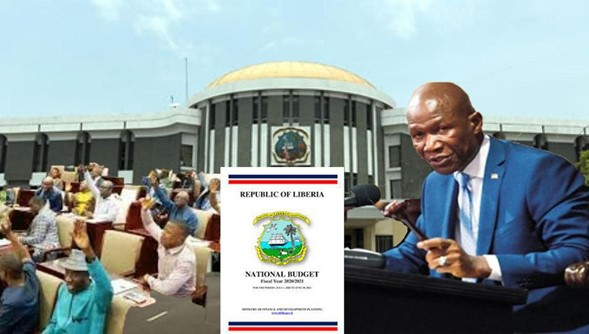Fifty (50) students at the University of Liberia’s College of Agriculture and Forestry have begun a three-day field visit at the ArcelorMittal Liberia Yekepa Concession, where they are expected to gain practical knowledge and skills in the areas of conservation and biodiversity as well broader environmental issues. The field visit was organized by the company, in collaboration with the state-owned university.
Accompanied by their Associate Dean of College, departmental heads and environmental experts from ArcelorMittal Liberia, the students are visiting several places, including the Zor Community Forest, agricultural projects sponsored by AML under the biodiversity and conservation program, the Blue Lake left behind by LAMCO, the sewage plant in Yekepa and the botanical garden of the Environmental Department during the field trip.
William Draper, Associate Dean of the College of Agriculture and Forestry at the University of Liberia, commended AML for facilitating the field trip, and urged students to take advantage of it and explore practically their career dreams, noting that this opportunity is very rare, as students will have the theoretical knowledge but do not have the opportunity to practice.
The BCP program was launched in August 2011. The first field assessors were brought in May of 2015, and students at that time came from Cuttington University, followed by students from other universities. The most recent visit was by students of Stella Maris University in 2022 at the Buchanan Environmental Office.
Linda Dolo, Biodiversity Conservation Officer of ArcelorMittal Liberia, explained that the field trip for the University of Liberia students is based on a memorandum of understanding between ArcelorMittal and the Department of Agriculture and Forestry to create the condition for students to acquire practical experience in conservation, agriculture and ecology by exploring the wild and the ENNR.
AML provides funding for the field trip, and the goal is to encourage students to experience research, conduct personal assessment, create botanical garden and other accessible methods of practical learning in the fields of forestry and agriculture.
At a station point in Zor Tarpa, where the Forestry Development Authority (FDA) has its sub-office, Dolo in a presentation highlighted the importance AML attaches to the biodiversity and conservation program, noting that this is intended to create a safe habitat for wild animals and endangered species.
She further explained that since farmers in the mine communities are accustomed to subsistence farming using upland covered by forest, AML introduced the biodiversity and conservation program to train the farmers to reduce the pressure on the forest by concentrating more in the lowland area using the method of slash and mulching which, according to agriculturists, produces more yields than burning. In addition to creating a habitat for the affected animals, Linda said the program also seeks to encourage activities that help to avert climate change.
Also presenting on environmental issues to the students, Cyrus K. Weah, Environmental Superintendent of AML, clarified that since mining involves clearing the vegetation and opening the soil, his team is responsible to assess where mining is done to avert any situation including soil and waterway pollutions resulting from mining.
He said they do this by revegetating, building check dams for water filtering, and ensuring that miners comply with the environmental laws guiding the company against acts that destroy the environment.
For Ambrose Paye, who serves as Compliance Superintendent for AML, his work, as presented to the students, entails that he monitors the environmental condition associated with what enters the waterways and the noise and vibration caused by machinery.
According to Paye, AML as an internationally recognized mining and steel company subscribes to many international instruments under which it must comply with best practices. Therefore, he said, “While I am with AML, paid and receive all of my benefits, I monitor all of its activities relating to the environment and whatever it does not comply with, I flag it out and those responsible for the breaches are reported to the company and stern actions are taken against them.”







